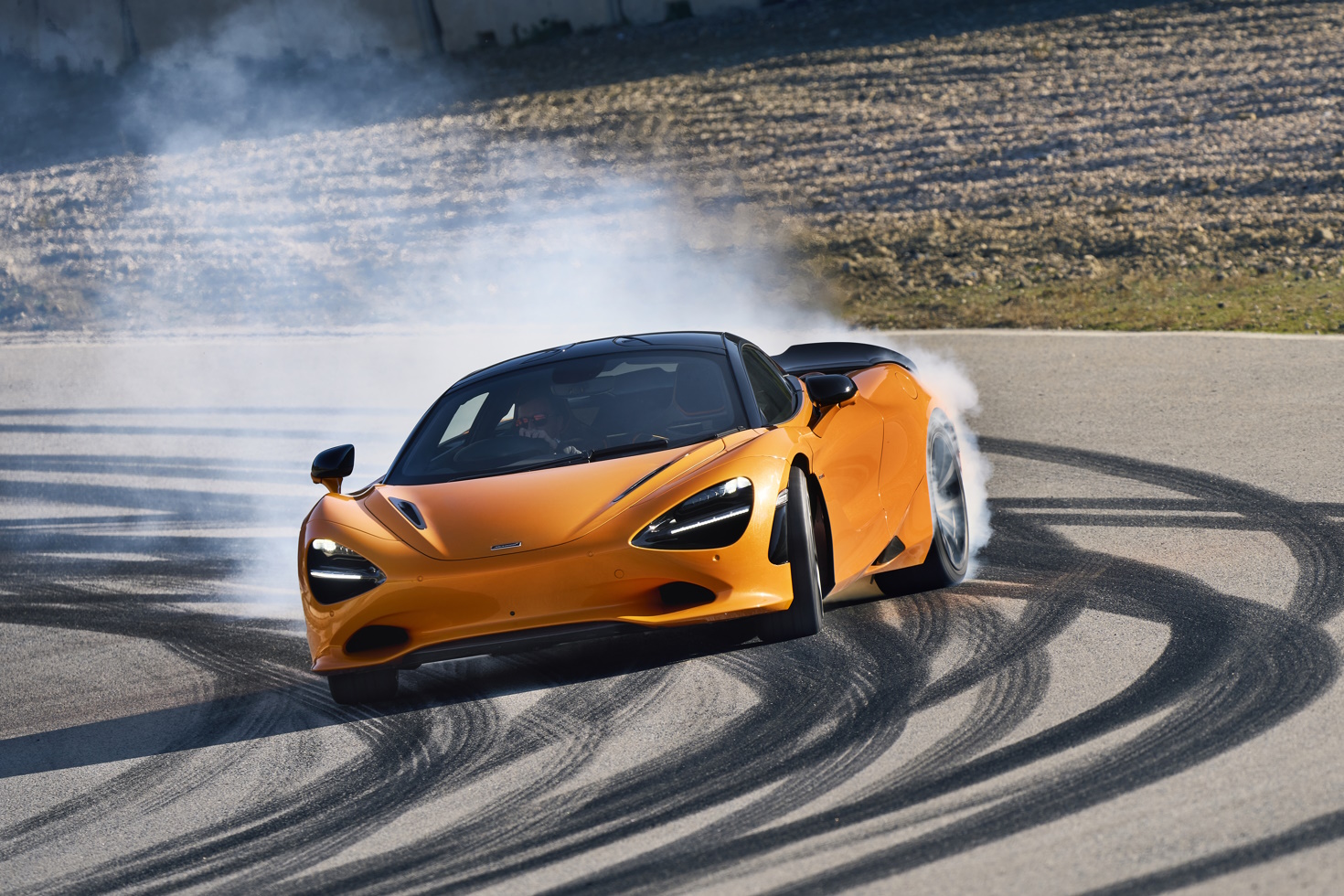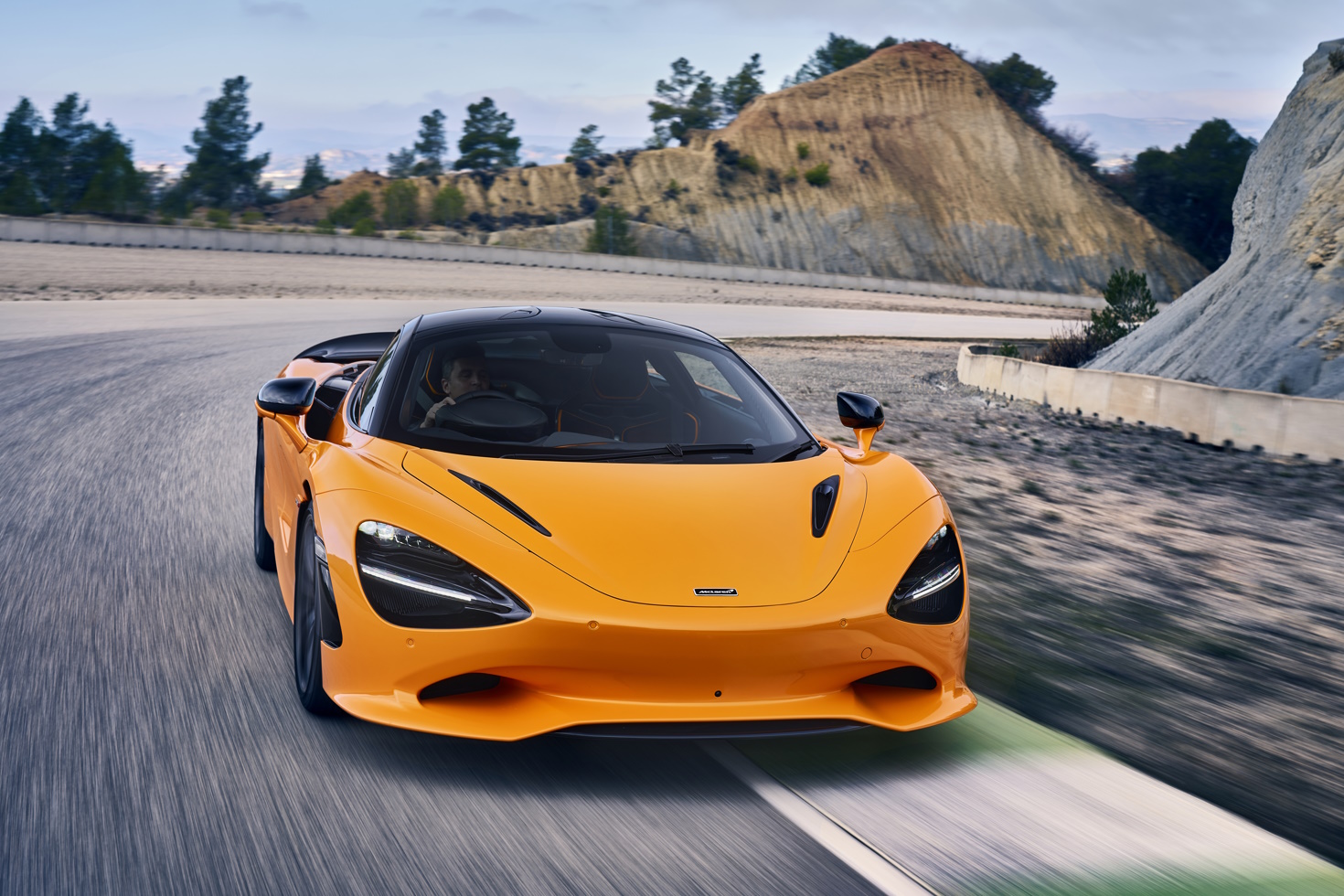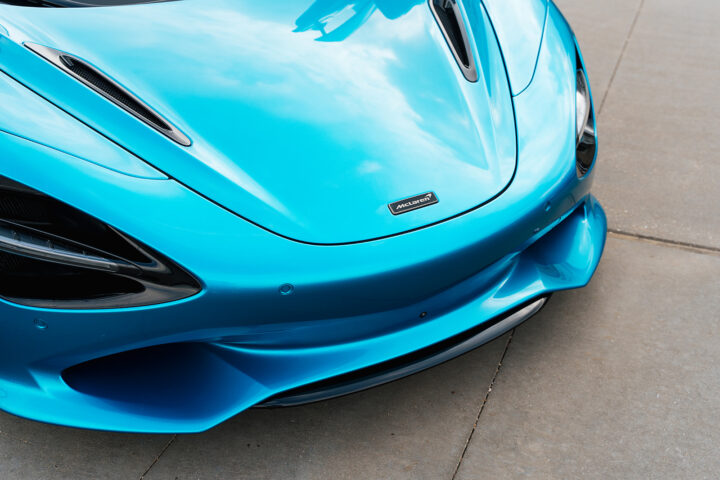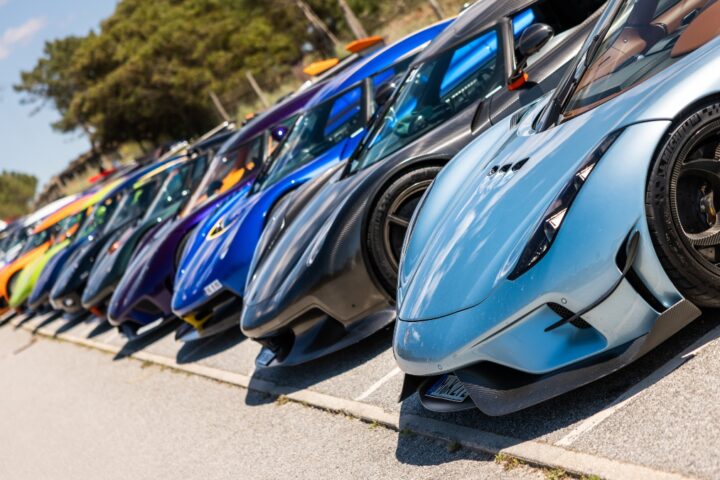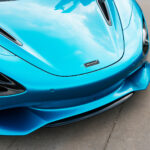TGR Staff – 04/25/2023
The new McLaren 750S is, without a doubt, the British automaker’s most impressive supercar to date. It’s lighter, more powerful, and boasts a host of performance and technology improvements that make it a true driver’s car.
With a focus on weight-saving, powertrain performance, aerodynamics, and dynamic excellence, the 750S represents the next level of supercar engineering. Designed and engineered following a meticulous analysis of the renowned McLaren 720S, the new 750S is a true testament to the company’s dedication to performance-based innovation.
At its lightest dry weight of 2,815lbs, the coupe version of the 750S is a full 425lbs lighter than its closest competitor, delivering a segment-leading power-to-weight ratio of 579bhp-per-tonne. This remarkable weight-saving feat is made possible by using carbon fiber and other lightweight materials throughout the car’s construction, including carbon fiber-shelled racing seats that are a combined 38.6 lbs lighter than the base seats in a 720S.
The 750S Spider, meanwhile, weighs in at just 2,923 lbs at its lightest dry weight, making it one of the lightest and most agile convertibles on the market. The Spider also features a Retractable Hard Top (RHT), a rollover protection system, and a bespoke rear upper structure to the monocoque constructed from carbon fiber, but such is the strength of the carbon fiber monocoque that no additional reinforcement is needed.
But the 750S is not just about weight-saving. It’s also packed with performance enhancements that make it a true driver’s car. The 4.0-liter, twin-turbocharged V8 engine produces a whopping 740bhp and 590 lb-ft of torque, making it one of the most powerful production cars on the market today. The coupe version is capable of 0-60mph in just 2.7 seconds, while the Spider can achieve the same speed in just 0.1 seconds more.
In addition to its powerful engine, the 750S also boasts a host of improvements to its suspension and chassis. McLaren’s Proactive Chassis Control linked-hydraulic suspension, which is renowned for combining astonishingly precise body control with a remarkably compliant ride, is now even more impressive in the new PCC III form. The new generation system delivers even higher levels of suspension performance and is integral to the outstanding dynamic abilities of the 750S.
The suspension springs are softer at the front and stiffer at the rear than in the 720S, which together with a reconfiguration of both the passive and active elements of the bespoke valve stack and a new approach to tuning the suspension – adjusting the accumulators in the struts, which is used for the first time in 750S – benefits ride comfort, roll control, steering feedback and cornering balance. Additionally, the new spring and damper design reduces weight by 4.4 lbs.
The combined hardware and software changes made for PCC III mean the dynamic breadth of 750S is even greater than its predecessor, McLaren’s new benchmark supercar maintaining 720S levels of comfort while delivering significantly improved circuit performance.
The interior of the 750S is just as impressive as its exterior, featuring innovative technology and exquisite materials. The driver-centric display is mounted in a binnacle that has the controls to select Powertrain and Handling modes located on either side, meaning the driver can move effortlessly between Comfort, Sport, and Track Active Dynamic settings while keeping their hands on the wheel and a complete focus on the road ahead.

